We went on a field trip to Glasgow on Wednesday, and one of the things that stood out for me was Derek Jarman’s Modern Nature.
Derek Jarman’s Modern Nature provoked a number of thought-provoking curatorial aspects, particularly on the levels of intergenerational dialogue, spatial use, media fusion, and Queer Ecological Politics, which demonstrated the curator’s subtle interpretations and expansions of Jarman’s artistic legacy.
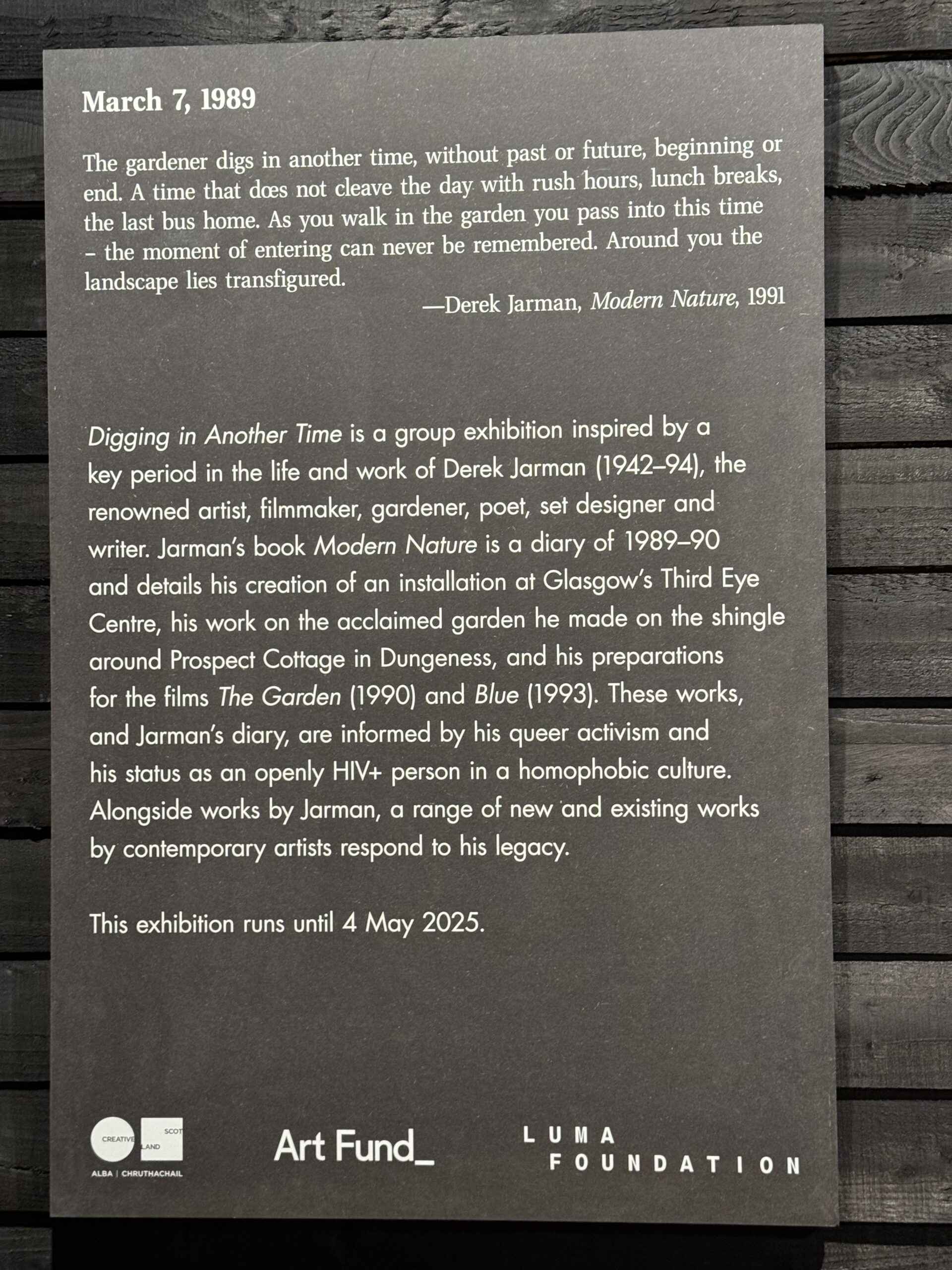
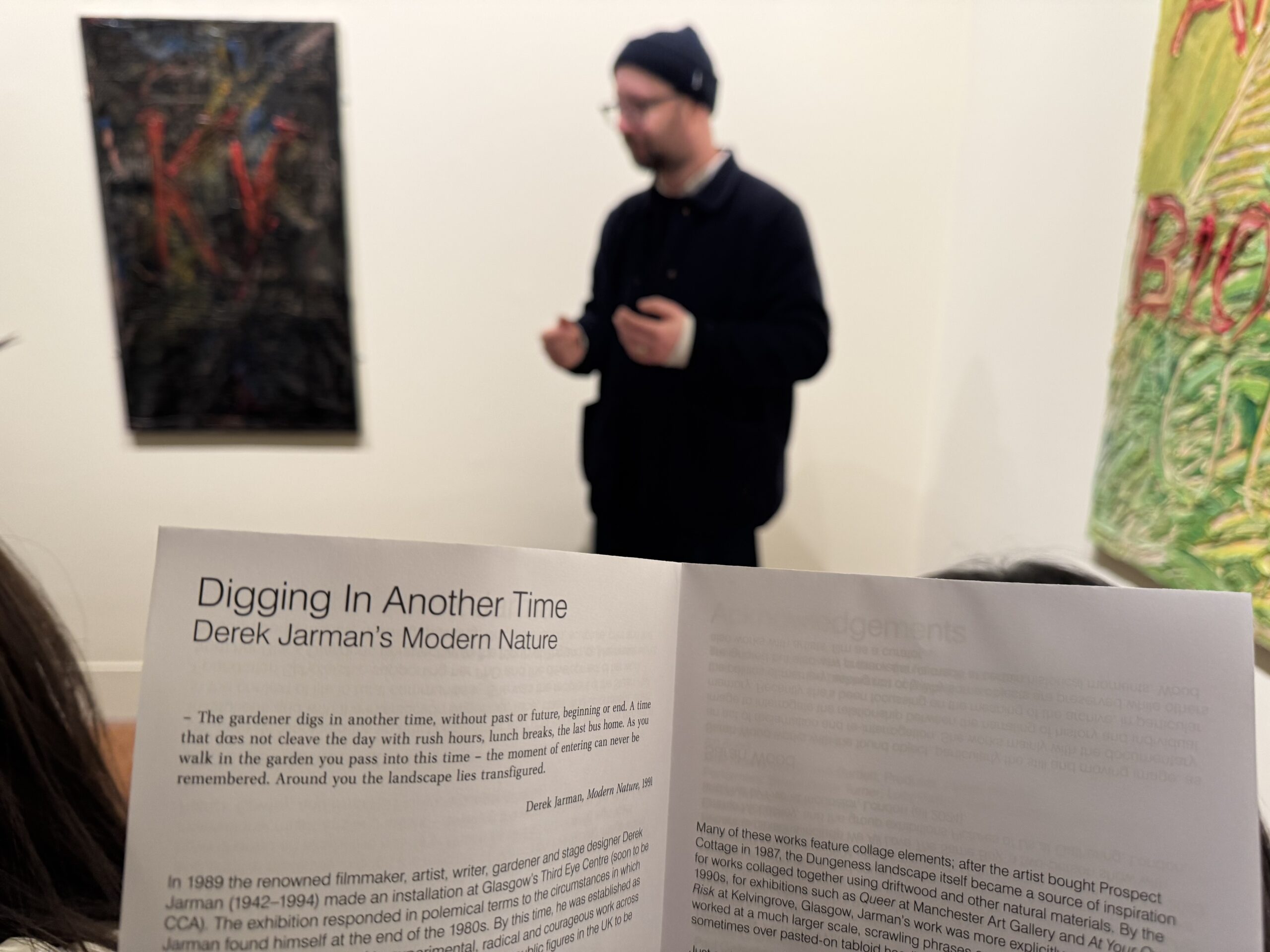
The exhibition is inspired by Jarman’s diary entries from 1989, which record his performance installations at Glasgow’s Third Eye Centre, the famous garden he planted at Prospect Cottage, Dungeness, and the process of creating his film The Garden. Garden, and his creative process for the film The Garden.
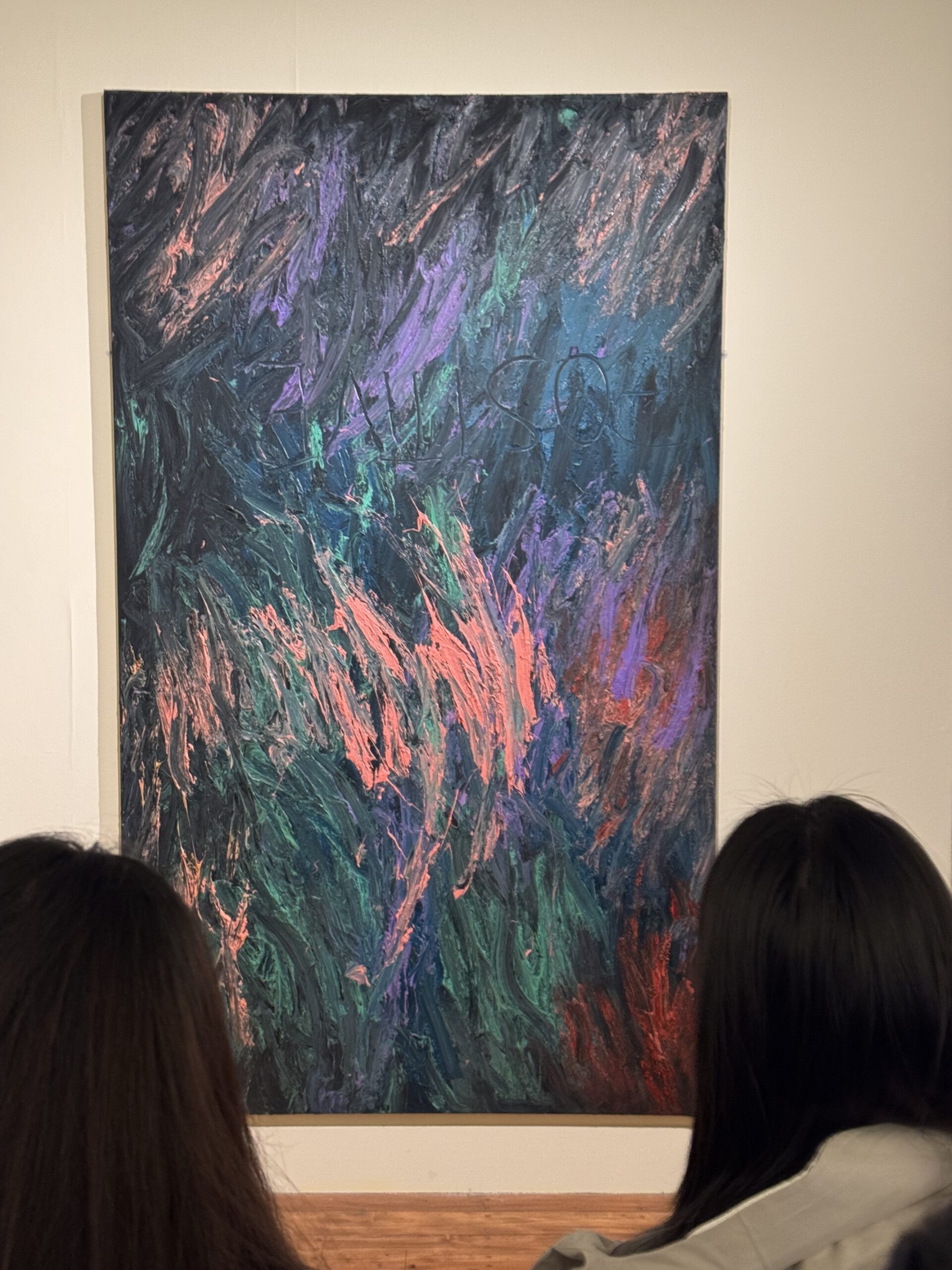
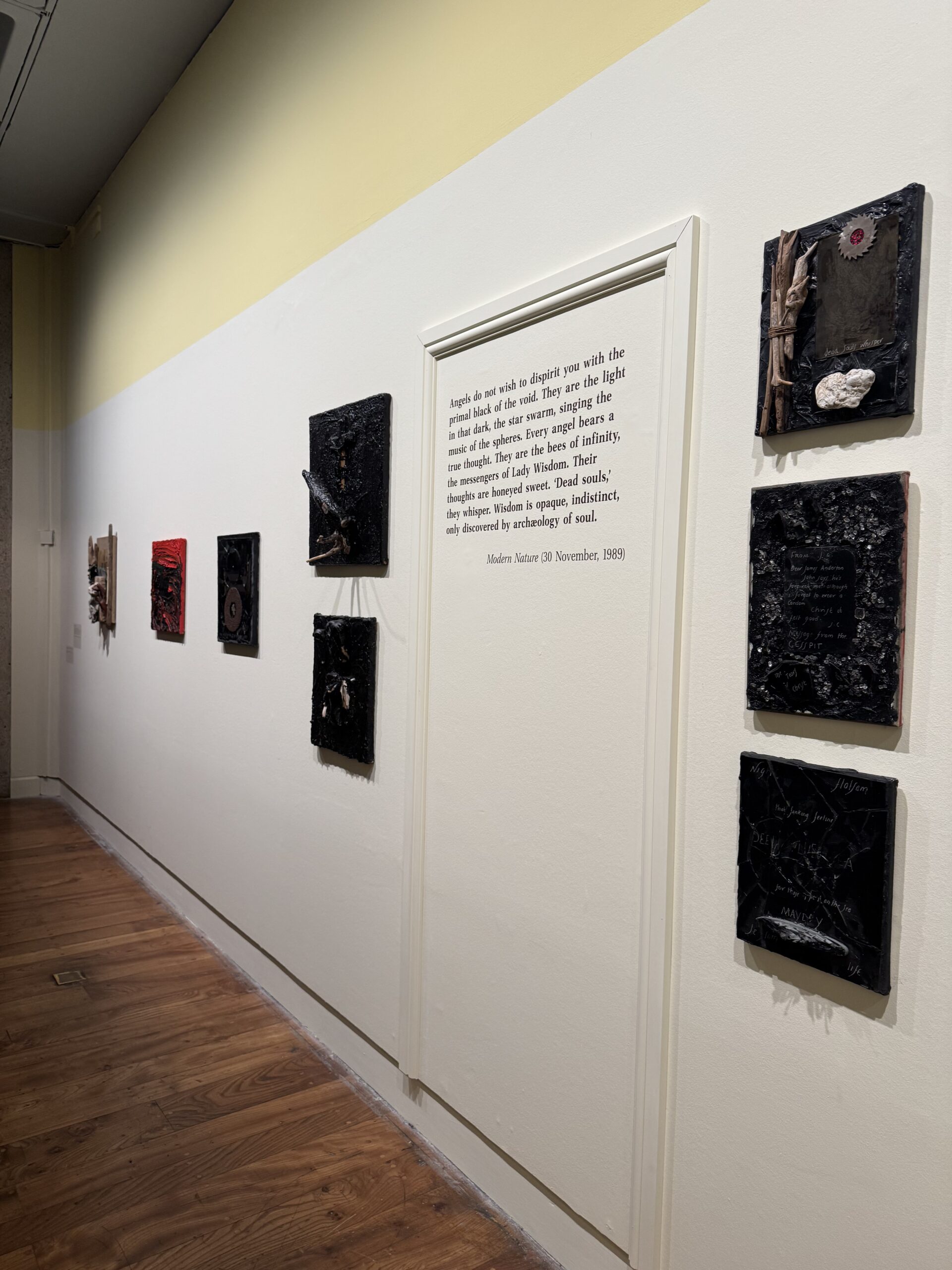
The exhibition not only showcases Jarman’s paintings, films and collage/assembly artworks, but also includes commissioned works by six contemporary artists: Andrew Black, Luke Fowler, Jade de Montserrat, Tom Walker, Matthew Matthew Arthur Williams, and Sarah Wood. This reminds me of Hal Foster’s ‘archival curation’ and Claire Bishop’s discussion of ‘activated history’: exhibitions are not just about the curation of the exhibition. Claire Bishop discusses ‘activated history’: an exhibition that does not merely present an existing archive, but allows history to be reactivated, reinvented, and even challenged in the present.
These new works are in dialogue with Jarman’s work, exploring radical interpretations of landscape and place, experimental uses of media, and the importance of and contribution to the history of cool.
From a curatorial point of view, what inspires me most about this exhibition is that curating is not just about ‘presenting’ art, but about making art ‘act’ again, creating an ongoing dialogue between history and the present.
Derek Jarman’s Modern Nature © 2025 by Chuni Mao is licensed under CC BY-SA 4.0
Glasgow field trip © 2025 by Chuni Mao is licensed under CC BY-SA 4.0
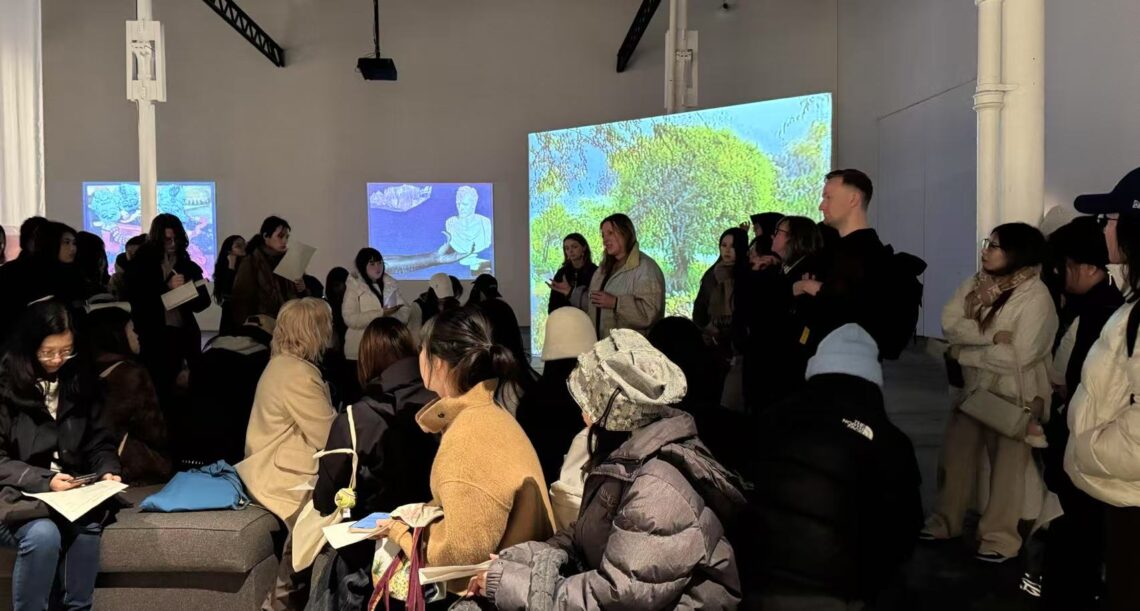

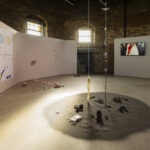
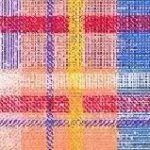
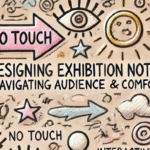

Julie Louise Bacon
10 March 2025 — 09:04
Hi Chuni, while it is good to see you apply your thinking to a reading of the work of Anicka Yi, a Korean-American artist who participated in the Venice Biennale (2019) she is not a feasible artist to include. Ivana Bašić is more realistic, though she is mid-career, so at the limit of your reach.
I read about your interest in VR and AR, however while a tourist attraction may be a starting point, you must include curatorial research and examples of their use in art practice to demonstrate what you mean and to more critically engage with this field. Articles on the potential that technologies offer curating would improve the post. While you present good images of Corpse Flower, remember you must offer full captions for everything, it is a ‘professional’ portfolio, and crucially, you must demonstrate how the fieldwork has informed your thinking and research, beyond basic documentation. Overall, there remains a need to engage with the key elements of the Blog as described in the Toolkit (including review and reflection of Collective work) in a more consistent and comprehensive fashion to success with this assessment component.
Your peer review of Haonan’s Blog is strong, you work progressively through the posts showing a thoughtful engagement with content. You mention useful feedback “The blog posts contain your personal experiences and reflections as well as incorporating academic analyses, reflecting the integration of theory and practice.” I would encourage you to apply this more to your own Blog, which needs more engagement with course materials and curatorial/critical theory texts (or indeed material from associated disciplines that may be relevant to your project theme). Your peer review of Shumiao is similarly well-focused, good work. In addition to the questions offer materials for your peers to aid them, and once again, look at the advice you give to Shumiao and ask yourself, do I do enough of this, because for example you could improve the range of references and cross analyses you use to contextualise the development of your ideas.
CURATORIAL PITCH SLIDES
Your presentation had the majority of basic components for the pitch which was good to see. The slide on research questions is one of the strongest: could these inform the thematics of your project directly? Your project theme is strong, and could have different poetic, material/formal (plasticity and organic nature of materials reflects that of the body, physical properties like softness, reigidty) scientific or other disciplinary perspectives. Starting to work more on the refining of your narrative titles, the main text, and supporting sub-texts, as well as the floorplan/layout for your project is crucial now. Which artworks where? Which equipment is needed? Make sure all your artists are feasible: if you want to work with senior artists it must be through archival means or media, which I mention in your Blog. It is also crucial to think of actual spaces, ideally in Edinburgh/Scotland/UK/. More engagement with the range of themes we have in the course weekly is also crucial to improving your coursework, body-focused projects that have appeared in the weekly lectures for example.